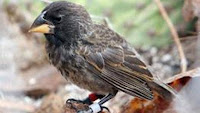 The Galapagos Islands represent natural beauty and stand as the symbol for the origin and evolution of life on Earth. Equally, they represent the Earth’s past and future conservation and preservation efforts. Ecological interaction with the planet is epitomized in the way humans interact with the animals, marine life, birds and even the land itself. This is a most phenomenal archipelago, and Charles Darwin played a major role in making it so.
The Galapagos Islands represent natural beauty and stand as the symbol for the origin and evolution of life on Earth. Equally, they represent the Earth’s past and future conservation and preservation efforts. Ecological interaction with the planet is epitomized in the way humans interact with the animals, marine life, birds and even the land itself. This is a most phenomenal archipelago, and Charles Darwin played a major role in making it so. While Charles Darwin did not discover the Galapagos Islands, he is the name most associated with their history and recognition. For it was Charles Darwin, a young naturalist, who came to the Islands, observed the plant, marine, bird and animal life and designed the intellectual premise known as natural selection or survival of the fittest. His thoughtful interpretation of what he saw and recorded changed human thought and understanding of the world around us forever. He saw continuity and coherency despite the diversity on each island and was able to merge these observations into a cogent scientific process that explains how life on earth evolved.
While Charles Darwin did not discover the Galapagos Islands, he is the name most associated with their history and recognition. For it was Charles Darwin, a young naturalist, who came to the Islands, observed the plant, marine, bird and animal life and designed the intellectual premise known as natural selection or survival of the fittest. His thoughtful interpretation of what he saw and recorded changed human thought and understanding of the world around us forever. He saw continuity and coherency despite the diversity on each island and was able to merge these observations into a cogent scientific process that explains how life on earth evolved.
Darwin visited the Galapagos Islands in 1835. Of his five-year voyage, he spent only five weeks in the Galapagos Archipelago and only about 19 days ashore, on the islands we now call San Cristobal, Isabela, Floreana and Santiago. He observed, “the natural history of this archipelago is very remarkable; it seems to be a little world within itself.” Indeed, that statement is equally true 1½ centuries later.
During his explorations, Darwin noticed that while each island often had the same types of bird, animal and plant life, there were subtle differences in each of them. He saw strange animals, unlike elsewhere in the world, but obvious familial relationships as well. He wrote, “Several of the islands possess their own species of tortoise, mockingbird, finches and numerous plants, those species having the same general habits, occupying analogous situations, and obviously filling the same place in the natural economy of this archipelago, that strikes me with wonder.”
 For example, there were more than 15 separate species of finches at that time and Darwin determined to make sense of that fact. He concluded that each was closely related to the mainland finch, but had adapted to its new surroundings, undergoing subtle but distinct changes to allow them to survive and procreate in their individual environment. He stated in Origin of the Species,
For example, there were more than 15 separate species of finches at that time and Darwin determined to make sense of that fact. He concluded that each was closely related to the mainland finch, but had adapted to its new surroundings, undergoing subtle but distinct changes to allow them to survive and procreate in their individual environment. He stated in Origin of the Species,"The relations just discussed … [including] the very close relation of the distinct species which inhabit the islets of the same archipelago, and especially the striking relation of the inhabitants of each whole archipelago or island to those of the nearest mainland, are, I think, utterly inexplicable on the ordinary view of the independent creation of each species, but are explicable on the view of colonization from the nearest and readiest source, together with the subsequent modification and better adaptation of the colonists to their new homes."

This theory of evolution and adaptation – as evidenced throughout the Galapagos Islands - is Darwin’s legacy.
Charles Darwin's theory is very interesting and logically right to my mind. And using the example of this bird http://www.beyondthemolecule.org.uk/ we can see that he was really right. We can apply it for different animals.
ReplyDeleteDarwin's theory is way more complicated then just 'human became from monkey'. Actually, he didn't even say this. But a lot of people, especially creationists, never read his works.I was so interested in his theory, that I even purchased a translation of research about it. Thanks God PickWriters helped me to find good translation firm, that made it fast, correct and with excellent service.
ReplyDeleteI enjjoyed reading your post
ReplyDelete